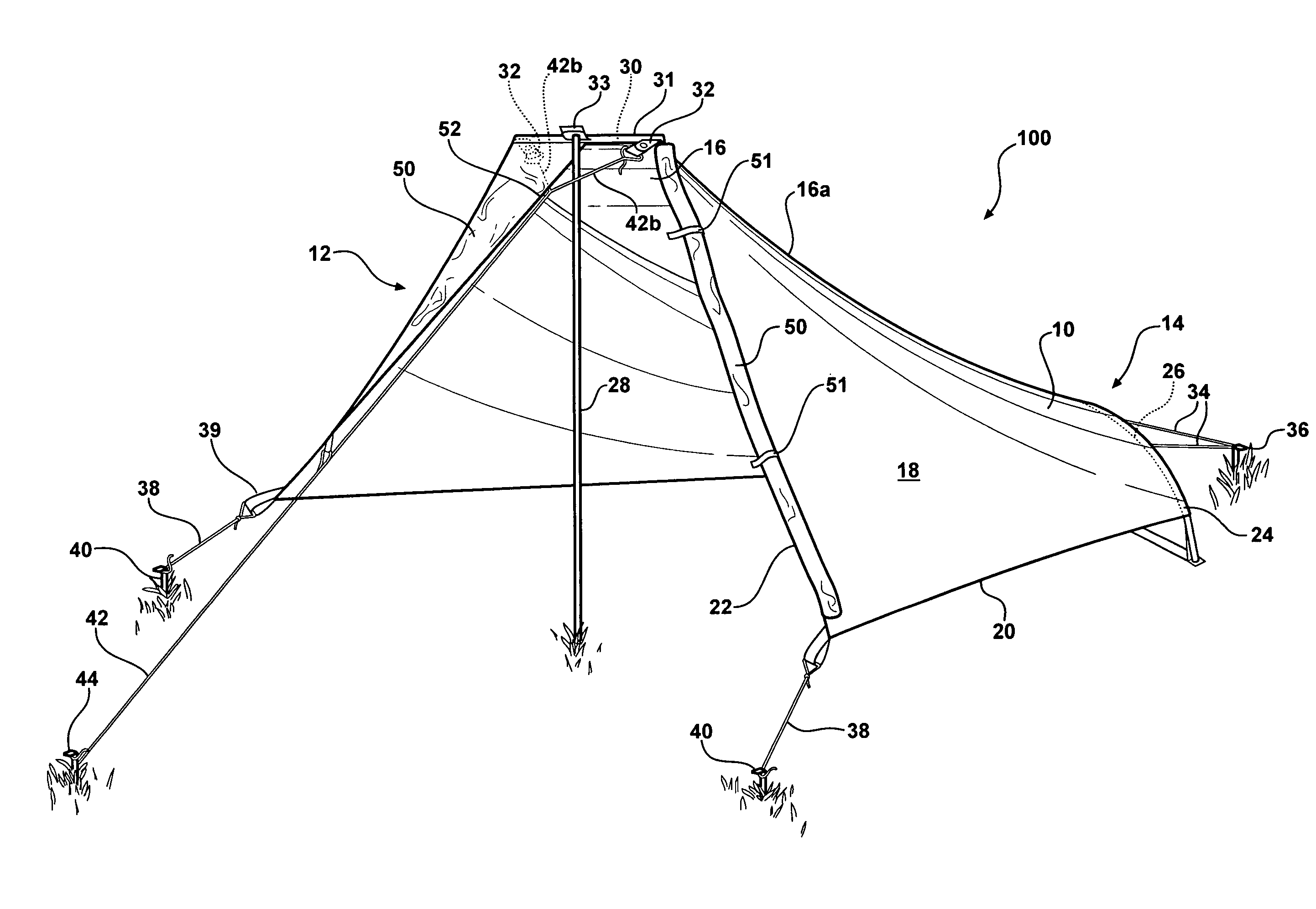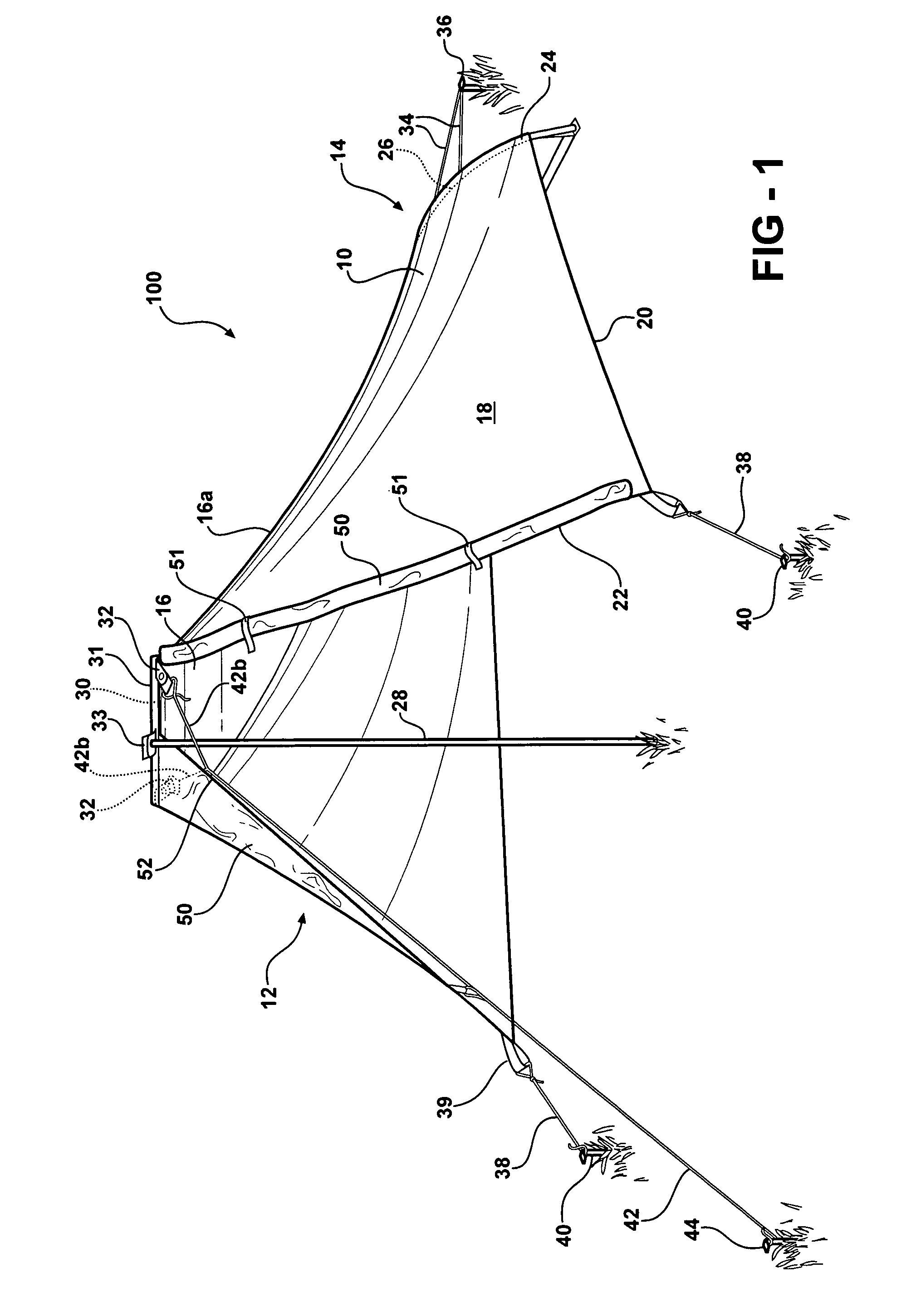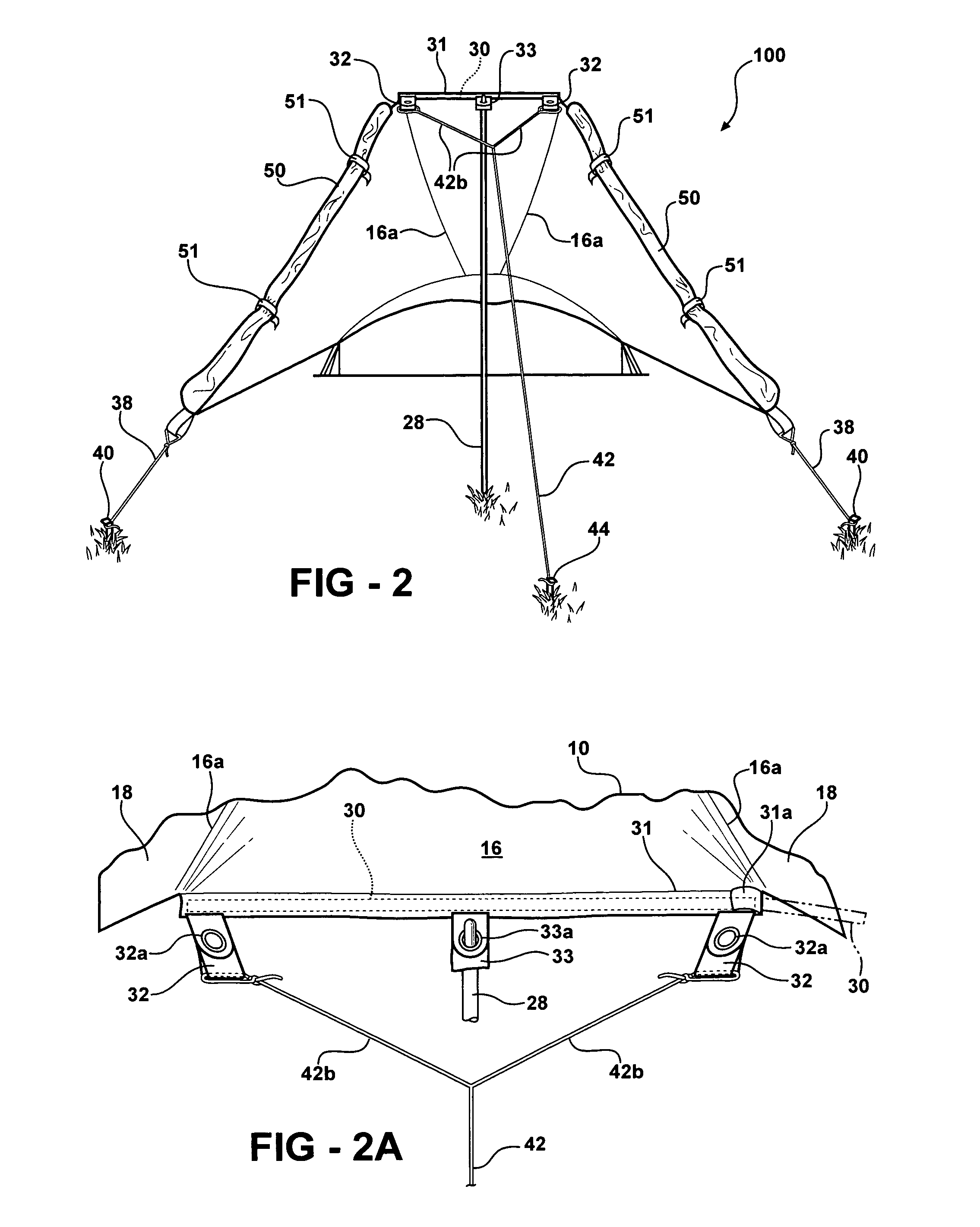Lightweight shelter
a tent and tarp technology, applied in tents/canopies, building types, constructions, etc., can solve the problems of single-wall tents being known for condensation problems, prone to being heavier, and solving condensation problems, so as to improve ventilation, facilitate setting-up, and increase interior space
- Summary
- Abstract
- Description
- Claims
- Application Information
AI Technical Summary
Benefits of technology
Problems solved by technology
Method used
Image
Examples
Embodiment Construction
[0023]Referring first to FIG. 1, a shelter 100 according to the invention is shown in a basic floorless canopy form, having a tensioned canopy 10 supported above the ground by a rear arched pole 26 in a manner disclosed in my co-pending U.S. application Ser. Nos. 10 / 673,285 and 10 / 673,286, and by a front upright pole 28. Preferred options such as insect netting sidewalls and doors and groundcloths or floors will typically be used but are omitted from FIG. 1 for clarity and to focus on the tensioned canopy structure. An optional but preferred front awning or beak 50 is shown with one side rolled back. The structure and use of such preferred options are disclosed in my earlier co-pending applications.
[0024]Canopy 10 is made from a lightweight, weather-resistant (preferably waterproof material such as silicone-coated or silicone-impregnated nylon, often referred to as silnylon or parachute cloth or sailcloth, usually with a weight of less than two ounces per square yard. It will be und...
PUM
 Login to View More
Login to View More Abstract
Description
Claims
Application Information
 Login to View More
Login to View More - R&D
- Intellectual Property
- Life Sciences
- Materials
- Tech Scout
- Unparalleled Data Quality
- Higher Quality Content
- 60% Fewer Hallucinations
Browse by: Latest US Patents, China's latest patents, Technical Efficacy Thesaurus, Application Domain, Technology Topic, Popular Technical Reports.
© 2025 PatSnap. All rights reserved.Legal|Privacy policy|Modern Slavery Act Transparency Statement|Sitemap|About US| Contact US: help@patsnap.com



